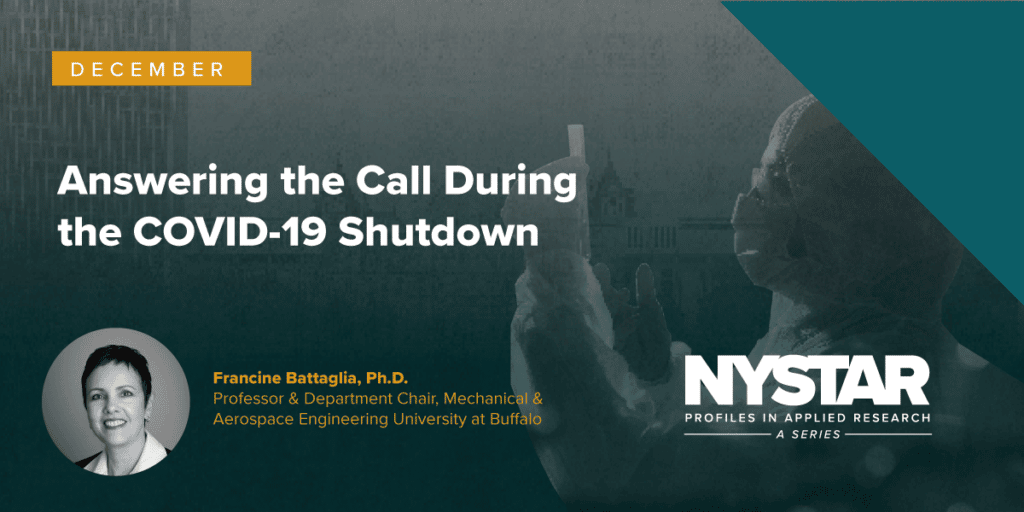NYSTAR’s Profiles in Research: Francine Battaglia, Ph.D.
In communities across New York State, some of the world’s brightest minds are pursuing groundbreaking and life-saving discoveries in partnership with research and innovation centers backed by NYSTAR, Empire State Development’s Division of Science, Technology, and Innovation. NYSTAR’s Profiles in Research series will share the stories of incredible researchers who are creating positive change and fueling technology-led economic growth statewide.
When the world closed its doors during the height of the coronavirus pandemic, Dr. Francine Battaglia was in a unique position.
As an expert in computational fluid dynamics, she often works to improve ventilation and air quality in buildings by looking at one central question – where does the air go?
And as everyone – from offices and schools to restaurants and orchestras – looked for ways to mitigate exposure to COVID-19 and remove pathogens from indoor spaces, Dr. Battaglia was ready to evaluate solutions.
“I thought this was a good way to support the local community,” said Dr. Battaglia, professor and chair of the University at Buffalo’s Department of Mechanical and Aerospace Engineering. “I was motivated by COVID and felt there was an opportunity to help.”
A research tool, computational fluid dynamics simulates the flow of fluids, such as droplets from sneezes and coughs in a room. That proved a vital resource for two companies working to bring commercial air purification systems to market.
Connecting with the Center for Advanced Technology in Big Data and Health Sciences (CAT) and the Center of Excellence in Materials Informatics (CMI), both funded by NYSTAR, Dr. Battaglia and her lab, ASCENT, used computer modeling to investigate several specific questions about airflow.
“My research is computational,” Dr. Battaglia said. “We’re not doing experiments. We’re using a computer to replicate what happens in the ‘real world.’ We can model how the air flows in a room. My role is to help the customers understand where the air moves when their devices are used in a building space.”
While both NYSTAR-funded projects worked on air purification systems, they approached the problem in different ways. The SteriSpace system by You First Services eliminates harmful airborne biological contaminants and sterilizes the air through existing ventilation systems, while the wall-mounted device by uvxPhyzx uses UV-C light to inactivate pathogens and pushes out clean air to the most-used areas of a room.
But both companies needed information on how air behaves in a room and how introducing their device would alter that behavior. Advanced computer modeling enabled Dr. Battaglia to track the likely movement of respiratory particles that are transported by the room air, calculating the best placement of the devices for maximum efficacy.
“Our lab could simulate a situation where an infected patient would sneeze or cough in a room and look where the respiratory aerosols and droplets would go,” Dr. Battaglia said. “We could introduce all kinds of variables and look at the best places to install systems and how that impacts the way the air flows in the room. These projects gave us an opportunity to demonstrate the ability of computational fluid dynamics to model and predict pathogen transport.”
###

